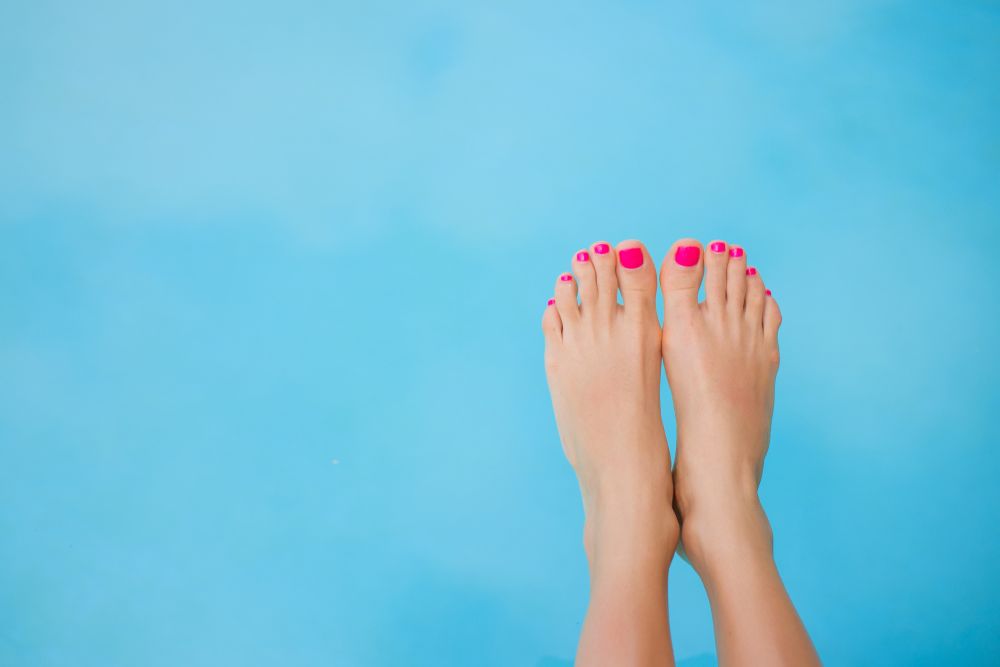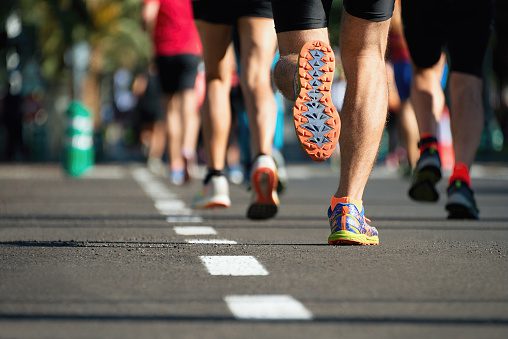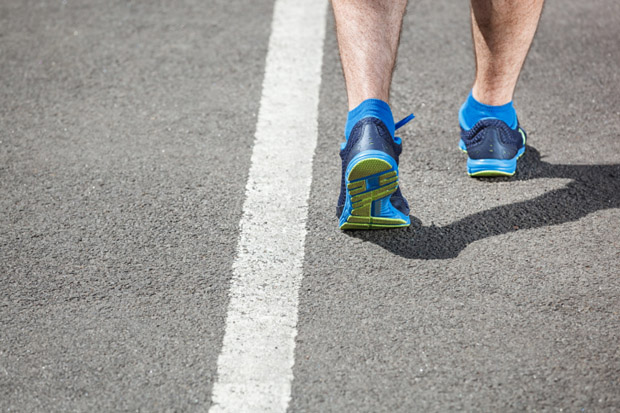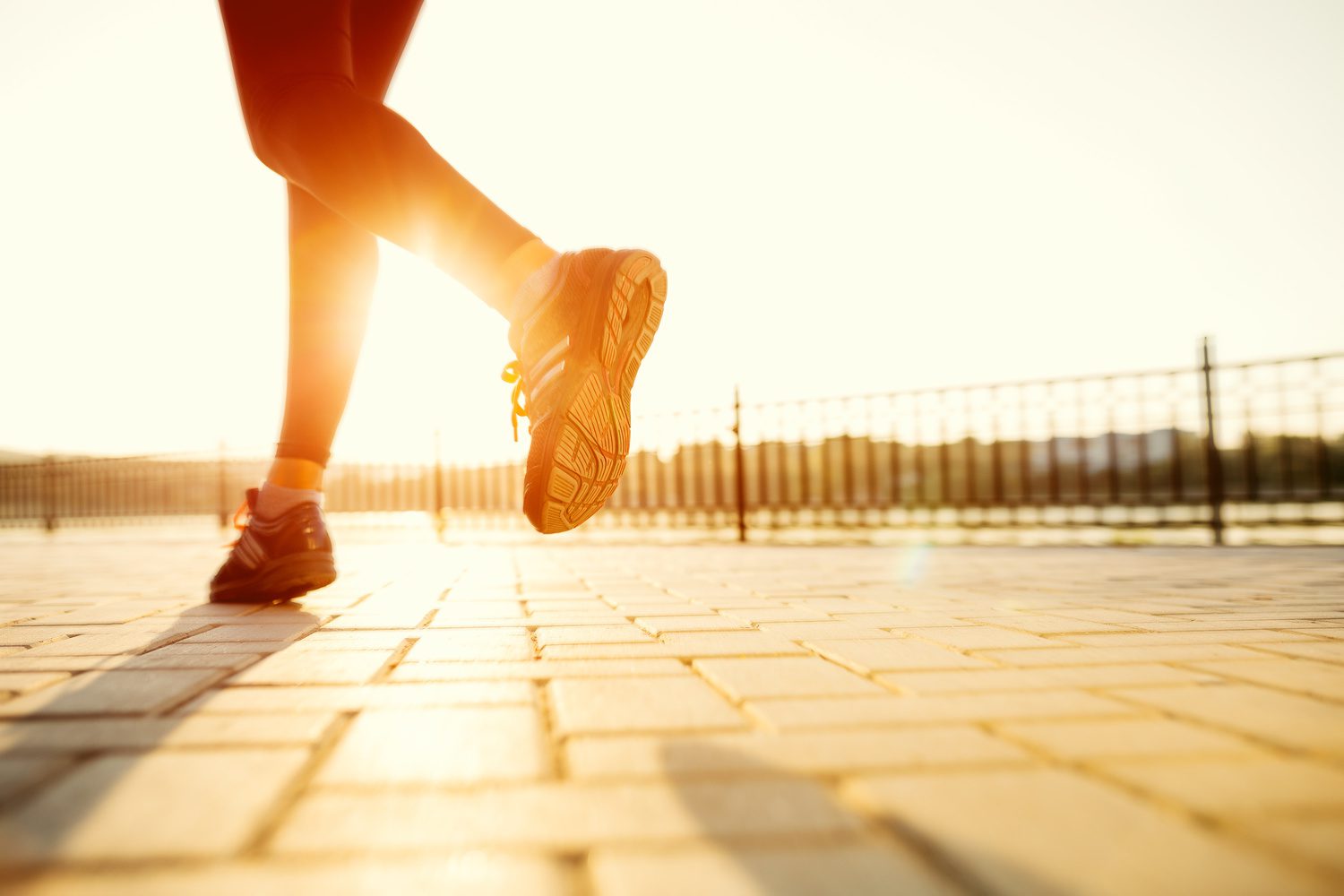Foot injuries for runners 101
Chiropodist Laura Desjardins tells us everything we need to know about how to take care of our feet

For all its benefits, running can be hard on the body. Miles and miles of pounding pavement can take a toll on your muscles, ligaments, joints and bones, and for many runners, this strain is felt particularly in the feet. Your feet are the first (and hopefully only) thing that hits the ground while you run, and not surprisingly, foot injuries are common among runners. We spoke with chiropodist Laura Desjardins at Toronto’s Podiatry on Yonge@King, to find out which foot injuries are the most common among runners, how you can prevent them and how to treat them if they happen.

RELATED: How the pandemic is changing our feet
According to Desjardins, the five most common foot injuries among runners include:
Plantar fasciitis: inflammation of the plantar fascia (a thick band of tissue that runs across the bottom of your foot and connects your heel bone to your toes)
Achilles tendonitis: an overuse injury of the Achilles tendon, the band of tissue that connects calf muscles at the back of the lower leg to your heel bone.
Posterior tibial tendonitis: inflammation of the posterior tibialis tendon (a strong cord of tissue that connects the posterior tibialis muscle on the back of your calf to the bones on the inside of your foot).
Metatarsalgia: when the ball of your foot becomes painful and inflamed.
Stress Fractures: tiny cracks in the bones of your foot.
Desjardins says that most of these issues are due to overuse or when the foot is unable to withstand the load you’re placing on it. There could be multiple factors that might predispose you to a foot injury, but they most commonly arise when a runner has imbalances in flexibility, mobility and strength in the foot and other areas of the body. Lack of recovery, inadequate sleep, overtraining, improper footwear and ignoring the early warning signs of pain are other contributing factors that could lead to a foot injury.
“Nutrition is also important,” adds Desjardins, “A lower calorie intake, as well as a calcium deficiency, can impact bone health and predispose you to stress fractures.”
It is important to take care of a foot injury as soon as it comes up because it can indirectly cause injuries in other areas of the body. Desjardins explains that compensating for pain can alter your running mechanics and change how your other muscles are recruited. This can ultimately cause injuries elsewhere up the chain. For example, if someone is limping a lot, that can place a greater load on the other leg and hip. Over time, that imbalance can lead to another overuse injury elsewhere in the body.

How can you prevent foot injuries?
The most important thing a runner can do to prevent foot injuries is to make sure their feet are strong and flexible. Desjardins says that to get stronger feet, you must work the muscles in the foot as well as the calf. Exercises like toe curls, toe lifts and calf raises can strengthen the smaller foot muscles as well as the larger ones that allow your foot and ankle to move properly.
Preventing a foot injury doesn’t stop at the lower leg, however. As Desjardins explains, runners who want to prevent foot injuries should maintain a balanced strength and flexibility injury prevention routine that targets all larger muscle groups, including the glutes, hips, hamstrings and core. This is because although the foot is at the bottom of the limb, it is also impacted by weaknesses and forces acting above it.
“For instance, a weak glute may cause tightness and altered range of motion in the hip, impacting stride and how the foot lands while running,” says Desjardins. “The stronger the foot and calf are, the better it will be at handling the load, so strengthening of the foot is important along with other larger muscle groups.”
Other ways you can keep your feet healthy include rolling out the feet and calves, stretching, proper footwear and a balanced training regimen which includes rest and easy days. If possible, Desjardins suggests doing some of your training on softer surfaces to reduce the impact on your feet.

What to do if you have a foot injury
Desjardins says that if you have a foot injury, emphasis should be placed on recovery and rehabilitation. Depending on the level of pain you’re feeling, you may be able to run. If your pain is relatively mild, there are some things you can do to lessen the load being placed on the tissues of your feet and support them until they’re stronger. Taping and insoles dissipate the amount of load on the tissues while running and can provide support until they are stronger, or while you’re phasing back into running after time off. Compression, wearing proper footwear and even supportive sandals or footwear in the house can also help. If your pain worsens or is already higher up on the pain scale, then you are better off cross-training or resting completely. When resuming running after time off, Desjardins says it’s extremely important to load the foot and ankle in a careful progression, because too much too soon could aggravate the injury.
“When dealing with a foot injury it is wise to observe how the tissue responds 24 hours after exercising,” she explains. “Injuries sometimes do not hurt during the exercise but can have pain after.”
When you do get back to running, Desjardins recommends doing a combination of walking and running on softer surfaces. Start with short durations of running split up by longer periods of walking. Over time, you can slowly increase the duration of running and decrease the walking.
Finally, Desjardins adds that running too much in a carbon or rigid forefoot shoe tends to weaken your toe push-off strength, so if you have a pair in your rotation, make sure you take extra care and stick to your foot-strengthening routine.


